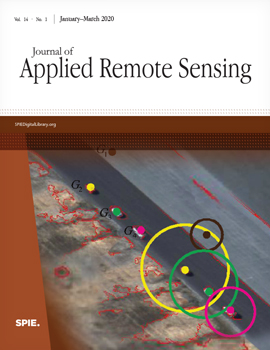Lingyue Wang, Meiling Liu, Xiangnan Liu, Ling Wu, Peng Wan, Chuanyu Wu
Journal of Applied Remote Sensing, Vol. 14, Issue 01, 014506, (January 2020) https://doi.org/10.1117/1.JRS.14.014506
TOPICS: Systems modeling, Classification systems, Image classification, Convolutional neural networks, Vegetation, Data modeling, Remote sensing, RGB color model, Near infrared, Statistical modeling
The rice-cropping system in southern China experienced a major change in the past few decades. Rice-cropping systems not only affect the comprehensive utilization intensity of agricultural resources, food security, and the ecological environment but also reveal the conditions of the agricultural policy, regional economy, and rural labor force. Consequently, accurate detection of rice-cropping systems is an essential issue. We present a method for classifying rice-cropping systems using a pretrained convolutional neural network (CNN) that involves extracting deep features of spatial and spectral trajectories. The study area is a major rice-growing region located in Zhuzhou City, Hunan Province, China. Multitemporal Sentinel-2 satellite images were collected to obtain time series curves of texture (spatial trajectories) and the first derivative vegetation index (spectral trajectories) as inputs of the hierarchical classification model. The classification results of land cover and rice-cropping systems were acquired using the pretrained CNN, and the method achieved overall accuracy of 94.78% and 94.87%, respectively. This method was then compared with the support vector machine (SVM). The accuracy of rice-cropping systems using the pretrained CNN was 7.11% higher than that of the SVM. The adaptability of the model was also investigated using the time series curve in another year with relatively insufficient data. The model obtained satisfactory performance with the overall accuracy of land cover types and rice-cropping systems of 93.52% and 93.23%, respectively. We suggest that the pretrained CNN can improve the accuracy of rice-cropping system mapping by extracting deep features of spatial and spectral trajectories during the rice growth cycle and such method may be applied in other fine crop classifications.



 Receive Email Alerts
Receive Email Alerts